Posts filed under ‘Uncategorized’
Love Fool: Fire Island at Frameline46 Film Festival
I recently caught Fire Island, Andrew Anh’s latest feature film, at the Frameline Film Festival here in San Francisco. As always the festival is the leadup to Pride Weekend, which is the last weekend of June and which culminates in the massive and legendary San Francisco Pride Parade. One of the most memorable Frameline screenings that I attended took place in 2013 on the same day that the Defense of Marriage Act was struck down by the Supreme Court, legalizing same-sex marriage in the United States. That night the Castro district was packed with joyous revelers celebrating the decision and we had to fight our way through crowds thronging the streets to get into the movie theater.
As fate would have it, the screening of Fire Island at Frameline also occurred right around the time of another landmark Supreme Court case, but this time it was night before the grim and regressive decision that reversed the landmark Roe vs. Wade decision that legalized abortion in the US. As I write this I can barely articulate my sorrow and rage and my continued despair as the US slides further toward fascism. Now that Roe v Wade has been overturned, Fire Island is either a beacon for the future or a time capsule of a way of life that will be threatened soon.

The film itself is delightful—a queer Asian American reworking of Jane Austen’s Pride and Prejudice set on the titular island that follows a friend group of five QTPOC who arrive at the legendary gay vacation mecca for a week of fun and frolic. Joel Kim Booster grounds the film as Noah, the pretty, somewhat jaded narrator of the story, with Bowen Yang as his sweetly vulnerable bestie Howie. Conrad Ricamora is droll and deadpan as Noah’s romantic foil, the upright and slightly repressed Will. James Scully as Charlie, Howie’s earnest love interest, is appropriately dorky and starry-eyed, with slightly absurd windswept hair. Margaret Cho as the lesbian den mother as usual lights up the screen. Most definitely a fun and kicky romcom, the film captures Fire Island’s cruisy, hedonistic vibe with many scenes of sleek beautiful cuties gyrating at underwear parties and swimming pools. Though the film casts a somewhat critical eye on the young, hairless, slender gay male standard of beauty, one of my quibbles about the movie is its lack of a lot of body diversity. But the film does critique the shallowness of the Fire Island scene and it doesn’t shy away from exploring the racism and classism Howie and Noah et al face in the snobby, mostly white Fire Island milieu.

Most significantly, Fire Island emphasizes the community minded mentality of Noah and Howie’s BIPOC chosen family. As director Andrew Ahn mentioned in the Q&A following the screening at the Castro, whereas David, the protagonist of his first feature film Spa Night, was pretty solitary, in Fire Island it’s all about the importance of supporting your tribe and *SPOILER* the film’s last scene interrupts Will and Noah’s first kiss to reestablish those collectivist connections. Fire Island is the saucy, community minded queer Asian American romcom we’ve all been waiting for and it’s great to see director Ahn successfully make the jump from indie film world to more mainstream productions. We need strong and articulate Asian American and queer voices like Ahn’s in Hollywood in order to combat the oppressive forces in the US that want to obliterate the progress toward liberation and justice that our communities have made in the past fifty years.
Note: There’s another melancholic aspect of this screening. The management of the Castro has recently been taken over by Another Planet Entertainment which plans to use the theater as a mixed-venue with an emphasis on live music. Will this be the last film I see there before the seats are ripped out and the floor is leveled? Over the years I’ve spent countless hours there watching movies so the possibility that the Castro will no longer primarily be a cinema is endlessly sad. There is movement afoot to prevent this, however, but whether the effort will succeed is yet unknown.
Lose Yourself: San Francisco Jewish Film Festival 39
NOTE: this is my 200th post after more than ten years of blogging. At the time I started writing it back in 2008 I only wanted a place to fangirl over Francis Ng, but this blog has become much more than that in the decade plus since I started writing it. Since then I’ve won a major art writing award for the blog and several of the entries here have become full-blown scholarly essays and articles that have been published in academic journals and books. By constantly and consistently writing and posting here I’ve been able to hone my writing skills, develop my voice, and improve my chops in critical analysis. Who knew?
This year’s Jewish Film Festival has come and gone and I was fortunate enough to catch a few choice programs. The festival is one of the most highly attended in San Francisco, which is quite an accomplishment for a town that hosts a major film festival every month. But the Jewish consistently shows quality programs that demonstrate the breadth of what is considered a Jewish film. This is evident right up front with the festival’s trailer, which asks the question, What makes a film Jewish?
The festival opened with Fiddler : A Miracle of Miracles (dir. Max Lewkowicz), a fun and diverting if somewhat overstuffed film about the iconic Broadway musical. The film crams in a huge amount of information and covers a lot of territory, both figuratively and literally, as it touches on performances of Fiddler in places such as Japan and Thailand, as well as its origins on Broadway in New York City. Some of the elements are less successful than others, such as a very brief appearance by British Indian director Gurinder Chadha, who pops in and pops out in the blink of an eye. The film also spends a fair amount of time focusing on Jerome Robbins and his involvement with the original Broadway production of the musical but seems to quickly skim over the background of other creatives responsible for the play, including Jerry Bock and Joe Stein. Although overly encylopedic and ambitious and loaded with tons of performance footage spanning decades, the film is a nonetheless a charming celebration of a cultural icon that started the festival out on a very festive note indeed.
My Polish Honeymoon (dir. Elise Otzenberger) is a less unsuccessful cinematic outing. Although the premise is interesting—a young Jewish Parisian couple returns to Poland in search of the traces of their families in the wake of the Holocaust—the film’s execution is lacking. The lead character, Anna, is unsympathetic and Judith Chemla fails to bring much warmth or complexity to her character. Arthur Igual, however, is engaging and funny as Anna’s husband Adam. Though it tries for emotional meaning the uneven pacing and somewhat obtuse narrative, with random supporting characters added at the last minute, ultimately makes the film fall flat.
Seder Masochism, (dir. Nina Paley) is a kaleidoscopic animated feature that uses pop songs past and present to illustrate the story of Moses and the flight of the Jews from Egypt. Although I mostly was able to follow along I have to admit that my memory of the iconic story from way back in Sunday school is somewhat hazy. I remember the plagues, the Red Sea, the burning bush, and so forth, but I’m clearly not the target audience for this film. I really enjoyed Paley’s animation of an interview with her father that ostensibly is about Passover traditions which amusingly wanders into Paley’s failure to graduate from college and other diversions. Although many of the musical numbers were fun and engaging there was a certain sameness to some of them that diminished their impact. However, one of the later sequences that outlined religious wars from antiquity to modern day was absolutely brilliant.
The festival’s centerpiece, Tel Aviv On Fire (dir. Sameh Zoabi) is a clever and highly entertaining film that reframes the Israeli-Palestinian conflict through the lens of a soap opera, the television genre that is popular around the world, from Mexican telenovelas to Korean dramas to Turkish serials. The film follows Salem (Kais Nashef), a novice screenwriter who through happenstance and lucky timing manages to become a writer on a popular Palestinian soap opera. The show is shot in Ramallah and Salem must pass through the checkpoint every morning and night to get to and from his home in East Jerusalem. Along the way he encounters an Israeli officer named Asi (Yaniv Biton) with strong opinions about the direction of everyone’s favorite Palestinian soap opera, the titular Tel Aviv On Fire, and the two end up inadvertently colloborating on the plot and outcome of the popular show. The film gently sends up soap opera tropes, as well their addictive appeal among audiences on both sides of the checkpoint, and Nashef and Biton display their excellent comic timing as the screenwriter and the soldier who bond over hummus and melodrama. The film deftly explores thorny issues facing Israel and Palestine with wit and humor, combining wry and winning performances with a clever script.
Long Dark Road: 2019 Noir City film festival

Party Time, Pickup On South Street, 1953
The 2019 edition of the Noir City film festival just finished another excellent run and there was a party atmosphere for the 10-day festival as the Castro Theater hosted full houses for almost every show. As usual Noir City had value-added features including live music in between some shows, screenings of rare clips and trailers, and informative and edifying introductions by Noir City founder Eddie Muller and other knowledgable film noir geeks/authors. The movies I attended were uniformly good, but a few stood out due to the significant combination of a great cast, a strong script, and excellent direction.
Some of the festival’s offerings fell a bit short on one of the three key elements above, making for less than satisfying results. For instance, legendary director Michael Curtiz (Casablanca; Mildred Pierce) helmed The Scarlet Hour (1956) with a sure hand, and the script is classic noir, about a femme fatale and her hapless sap of a boytoy who are involved in a jewel heist. But rookie actresss Carol Omhart isn’t quite up to scratch in the lead role and despite its other strong elements the film falters on her uneven performance. Conversely, The File On Thelma Jordan (1950) includes an excellent performance from Barbara Stanwyck and moody and evocative direction by Robert Siodmak but the script’s improbable plot twists diminish the film’s overall impact.
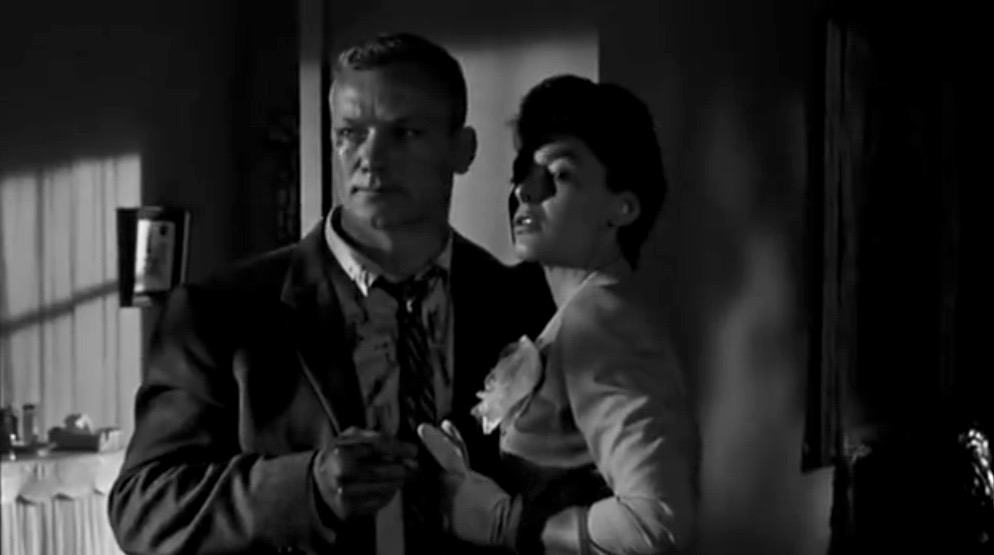
Struggling, Nightfall, 1957
Jacques Tourneur’s Nightfall (1957) is a much more successful endeavor. Although not possessing the mournful beauty of his classic noir Out of the Past, Nightfall still showed Tourneur’s strong directorial touch. The film’s two thugs, played by Brian Keith and Rudy Bond, feel truly menacing and Aldo Ray as the protagonist on the run conveys a strong sense of a man struggling to keep his bearings in the shifting sands of noir-world danger. A very young Anne Bancroft is Ray’s love interest and her performance displays a strength and gravity beyond her years. The film has just the right touch of fatalistic peril and dread to keep the viewer engaged.
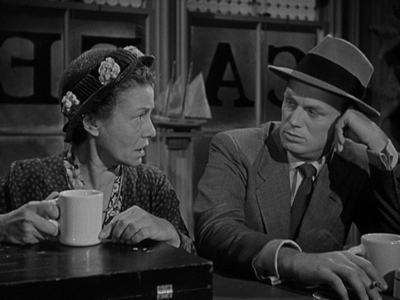
Complex, Pickup On South Street, 1953
One of my favorite films of all time, Pickup On South Street (1953), was part of a trio of movies directed by Sam Fuller in this year’s festival, and it fully demonstrates a film firing on all cylinders, with acting, script, and directing all top-notch. Fuller’s kinetic directorial style and his intense, fast-paced script brilliantly complement Richard Widmark and Jean Peters’ performances as streetwise characters who are constantly maneuvering to survive. Thelma Ritter contributes a stellar performance as an aging stool pigeon, delivering a complex and emotional turn that forms the moral center of the movie.
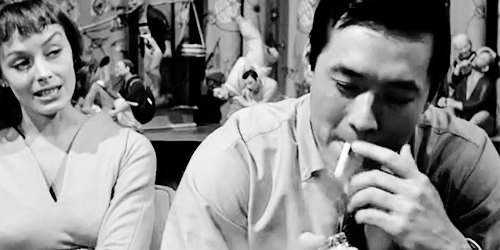
Sultry, The Crimson Kimono, 1957
The festival also screened Fuller’s 1957 film The Crimson Kimono, which is notable for including a Japanese American character, Joe Kojaku (played with sultry subtlety by the doe-eyed James Shigeta), in a romantic lead. The film also includes a sympathetic and mostly Orientalist-free representation of the Los Angeles JA community with Nisei characters who speak in unaccented English and who are human beings instead of exotic caricatures. The film falls a bit short, however, in its analysis of race relations as it suggests that Joe’s experiences with racist microaggressions are a figment of his imagination. SPOILER: He does get the girl, however, which for mid-1950s America was pretty revolutionary.
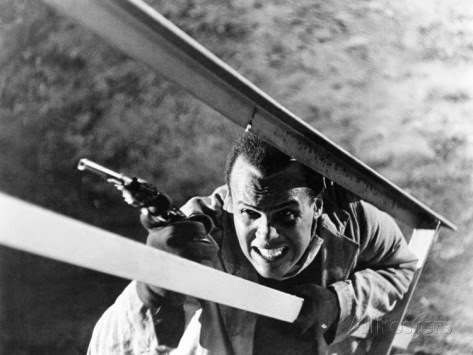
Tense, Odds Against Tomorrow, 1959
Odds Against Tomorrow (1959), a tense crime thriller produced by and starring Harry Belafonte, also possesses the magic combination of script, cast, and direction. The film shows a darker side to Belafonte’s usual upbeat persona as he plays Johnny, a nightclub singer facing dire straits due to his gambling addiction. After loan shark enforcers threaten his family with harm Johnny teams up with a couple of other shady characters including Earl, a racist from Oklahoma played by Robert Ryan, and David (Ed Begley), a fallen-from-grace cop. They three attempt to pull off a risky bank heist but the meat of the story is the strong character development of both Johnny and Earl. Director Robert Wise (West Side Story; The Sand Pebbles) delves into both characters’ personal lives to give weight and heft to what’s at stake for the two. As a result the film’s climax and conclusion are exceptionally tense and gripping. Also, unlike The Crimson Kimono, racism doesn’t get a pass in this film SPOILER and in fact Earl’s flagrant bigotry is a key culprit in the failure of the heist. END SPOILER Bonus points for supporting roles from Shelly Winters as Earl’s long-suffering girlfriend and Gloria Grahame as the sexy neighbor upstairs, as well as for the excellent score by John Lewis of the Modern Jazz Quartet.
The festival concluded with a pair of hard-boiled films from 1961. Sam Fuller’s third installation in this year’s festival, Underworld USA, is a bleak little number full of vengeance, double-crosses, and grudges. Cliff Robertson snarls his way through the film as a safecracker out to get the thugs who killed his dad some twenty years prior. With almost no redeeming characters the film is an existential ode to the shady side of life, where the only motivations are revenge and survival.
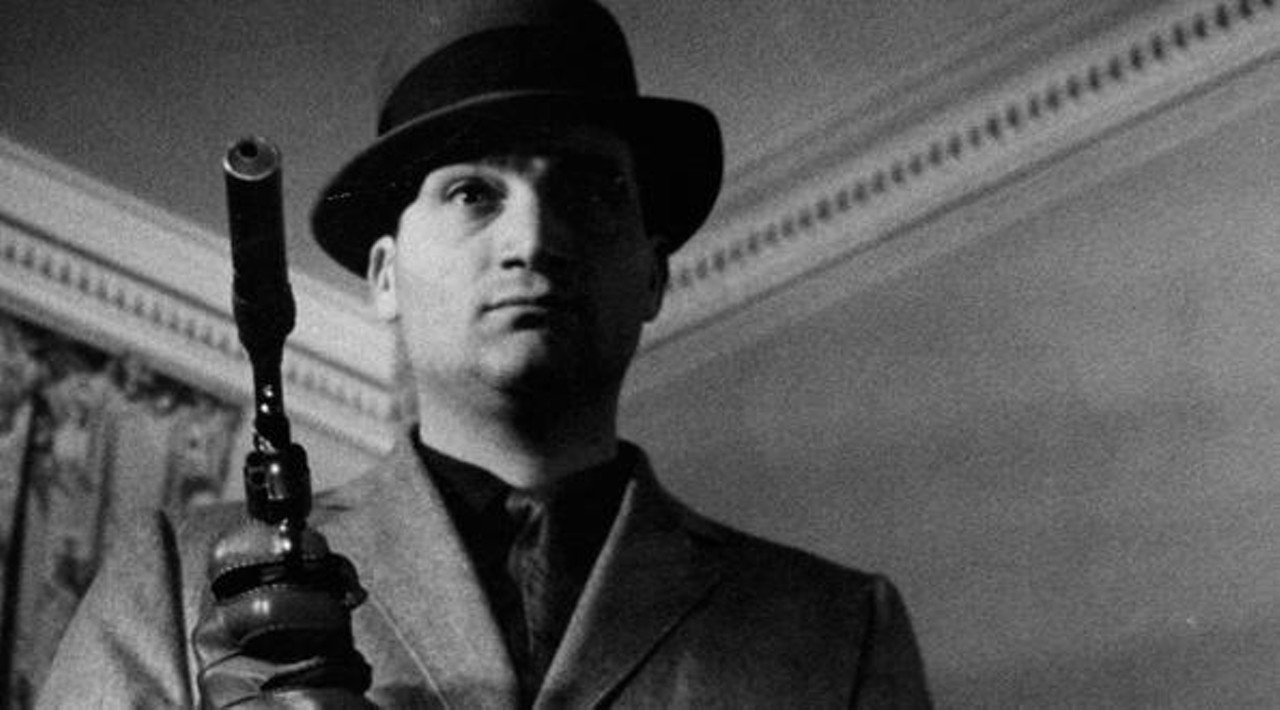
Twisted, Blast of Silence, 1961
The festival closed with the excellent and underappreciated Blast of Silence, a low-budget gem directed with a stylish and jaded eye by Allen Baron. Baron also stars as Frankie Bono, a creepy hitman who presages Travis Bickle in his angst-ridden interior monolog and his twisted, affectless approach to killing. The film follows Frankie as he plots his next hit and depicts his sad and stilted attempts to make meaningful human contact beyond his gruesome professional responsibilities. Bleak, hard-boiled, and grim, and set in the dead of winter between Christmas and New Year’s day, Blast of Silence is like an icy slap of cold air on a winter’s day.
Remake/Re-Model: Alifu the Prince/ss at the Mill Valley Film Festival

Fierce, Alifu The Prince/ss, 2017
Taiwan is perhaps the most queer-friendly territory in Asia, with very liberal laws that will most likely lead to the island nation to be the first in Asia to legalize same-sex marriage in a couple years. That tolerance and welcoming for all types of sexualities is reflected in Alifu The Prince/ss, a great little movie about the various shades of queerness in Taiwan.

Quotidian, Alifu The Prince/ss, 2017
The film focuses on a small group of gender non-conforming people in Taipei, centering around Alifu, the son of a Paiwan tribal leader (one of Taiwan’s indigenous groups) who is also considering gender-reassignment surgery. Alifu lives and works in Taipei as a hairdresser and the film follows their daily life in Taiwan’s capital city.
The relationship between Bamboo Chen as Sherry, a transgender woman, and Wu Peng-fang as Wu, her gruff but loving friend, also form a small but significant part of the film. Their relationship also delineates the fluidity of gender and sexuality as the longstanding platonic partners demonstrate another point along the spectrum of human relationships and identities. The film also includes short bits at the bar that Sherry and Wu own and featuring some of Taipei’s drag performers, including an ex-pat het Aussie, which reps the complexities of the city’s genderfluid community.

Serene, Alifu The Prince/ss, 2017
Director Wang Yu-lin gets great performances out of his cast of younger as well as veteran actors and Bamboo Chen won Best Supporting Actor at this year’s Golden Horse Awards for his role as Sherry. The film’s camerawork is also quite beautiful, creating a serene, quotidian portrait of Taiwan. Wang never allows the film to become overly melodramatic despite the various conflicts and dilemmas it presents, instead opting for a more naturalistic, somewhat observational style. The dialog, in Taiwanese Hokkien/Hoklo, Mandarin, and a bit of English, is also a nod toward Taiwan’s great cultural and linguistic diversity. Although the development of the key relationship between two of the main characters seems a bit contrived, it allows the film to conclude on an idyllic and optimistic note on a beautiful Taiwan beach.
Alifu The Princ/ess shows at this year’s Mill Valley Film Festival, which is also including a boatload of other great Asian films including Hirokazu Kore-eda’s latest, Shoplifters, Jia Zhanke’s Ash Is The Purest White, and Burning, South Korea’s Academy Award entry starring The Walking Dead’s Steve Yeun and directed by Lee Chang-dong (Peppermint Candy; Poetry). I’m heading across the Golden Gate Bridge to see these if I can, because Asian movies on the big screen are life.
Oct. 4-14, 2018
various venues
Once You Get Started: Frameline 42 Film Festival
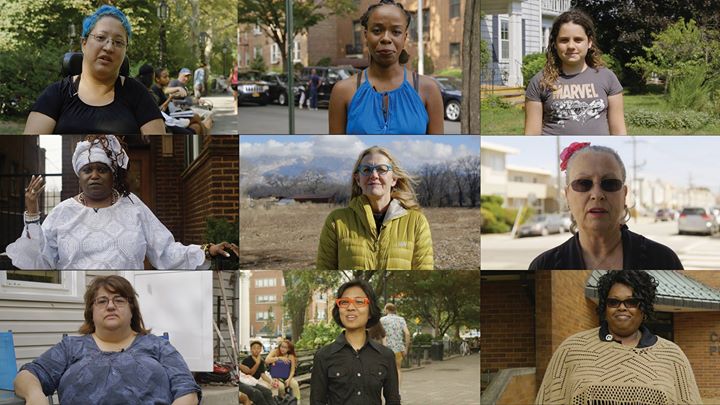
Tapestry, Yours In Sisterhood, 2018
Like Hong Kong, San Francisco is an excellent city for film-viewing, and with Frameline (official title: San Francisco International LGBTQ Film Festival) in full swing this week I suddenly feel like there are not enough hours in the day to see all of the movies I want to see. But I’m valiantly carrying on despite the burden of sorting through and prioritizing the festival’s ridiculously stacked schedule. A few highlights from my Frameline viewings this week include three outstanding documentaries and a narrative that demonstrate the high bar of the festival’s stellar programming this year.

Mixing it up, Yours In Sisterhood, 2018
Irene Lusztig’s documentary Yours In Sisterhood has a simple premise. Back in the 1970s thousands of women wrote letters to Ms. Magazine, the premiere mainstream feminist publication of the day, but due to space restrictions only a handful of those letters were published. The rest reside in an archive at Radcliffe University that Lusztig accessed some years ago. From that archive she chose about 300 letters and then found women from the same locales as the original writers to re-read the letters on camera—from those 300-odd readings she chose twenty-seven for the film. The results are a brilliant tapestry of 1970s feminism and the resonances from that era to the present day. Lusztig presents the first several of the re-readings straight up to the camera without commentary, then gradually embroiders this format, showing the responses of the modern-day readers to their 1970s counterparts’ missives. A handful of the letters are reread by their original authors as well, including a particularly poignant coming-out letter written by a woman who was sixteen in the 1970s. After reading her letter she recalls how at the time she thought that being queer meant that she would be lonely all her life and that she would never marry or have children. Happily, this bleak prediction did not come to pass as the woman reveals that in the intervening years she and her longtime partner have raised two children and are well-liked in their small-town community.
Lusztig also provides a bit of dyke fanservice by including lesbian author Deena Metzger reading her 1970s letter onscreen, which was cheered loudly at the Frameline screening I attended. A minor quibble: the film includes only one Asian American woman and one Latina, which I understand reflects the mostly-white demographics of the Ms. Magazine readership back in the day. But other than that Lusztig does a great job mixing up the optics of the film and presenting a diverse range of points of view.

Imbalance of power, Call Her Ganda, 2018
PJ Raval’s documentary Call Her Ganda follows the case of the murder of transgender Filipina Jennifer Laude, who was killed in a fit of gay panic by US Marine Joseph Scott Pemberton. Despite being convicted of the crime Pemberton was shielded from imprisonment by the US government, much to the outrage of the Filipino populace in general and the transgender community in particular. Raval’s film explicates the fraught history of the United States and the Philippines, using Laude’s case as an example of history of colonialism and the imbalance of power between the two countries. The film’s gliding camerawork effectively captures the glowing lights of Olongapo City by night and its hodgepodge of street markets, as well as the utilitarian bleakness of US military bases in the Philippines, which has long been exploited by the US due to its strategic location in the Pacific theater.
By focusing on the grassroots activism surrounding Laude’s murder Raval’s film recalls seminal Asian Pacific American documentaries such as Who Killed Vincent Chin? and The Fall of the I-Hotel which similarly depict the empowerment of the API community in the face of systemic injustices.

Vibrant, When The Beat Drops, 2018
Jamal Sims’ exuberant documentary When The Beat Drops is a vibrant celebration of bucking, or j-setting, a dance form originating in the black gay community in Atlanta. Based on moves from female cheerleading squads at historically black colleges and universities, in particular the cheer squad from Jackson State University, bucking primarily takes place in gay clubs throughout the south and southeast United States.
The movie helps to explode definitions of what makes a man and the fluidity of the various characters is breathtaking and effortless. It’s beautiful to see men so confident in their maleness that they are able to demolish the gender binary and let the many facets of their identity shine through. Added to that are some dope AF dance sequences, in clubs, in competitions, and en la calle, that strikingly depict the dynamism and creativity of the j-setting scene. I especially love the fact that the bucking competitions shown in the film are judged by some of the female cheer squad members whose routines j-setting pays homage to.

Perspective, Retablo, 2018
Álvaro Delgado-Aparicio’s Retablo is a beautifully told narrative that further explores the boundaries of masculinity, this time through the lens of a Peruvian family in the Andes. Delgado-Aparicio beautifully uses the cinematic grammar to underscore the mindset of Segundo, his young protagonist, who inadvertently finds out an uncomfortable truth about his father Noe. Noe is a master artisan who is training Segundo to create retablos, three-dimensional tableaux that act as family portraits, as devotionals, and as representations of significant events in their small Andean village. In the first part of the film Segundo’s worldview is stable and stationary, framed almost exclusively in master shots, which echoes the proscenium framing of the Noe and Segundo’s retablos. Once Segundo learns about his father’s clandestine trysts with other men the film’s framing and editing become more jagged and abrupt, reflecting Segundo’s unsettled state of mind. Delgado-Aparicio’s limited use of conventional tight shots and point-of-view shots in the first part of the film also pays off when he finally frames a key moment in the film in close-up from Segundo’s vantage point. The impact is shattering, reflecting the moment’s effect on Segundo’s previously limited perspective.
Retablo also explicates the village’s cultural taboos around same-sex relationships by emphasizing the hypermasculinity of Segundo’s friend Mardonio, whose bragaddocio possibly masks his insecurity about his own sexuality. Segundo and Mardonio enact a classic homoerotic triangle with local shopowner Felicita as Mardonio crudely sexualizes Felicita in order to deny his attraction to Segundo. The film’s dialog in both Spanish and Ayacucho Quechua, one of the most widely spoken Andean dialects in Peru, also lends an immediacy to the film.

Intimate, We The Animals, 2018
Still to come this week at Frameline: big, showy titles including those focusing on queer superstars Emily Dickinson (Wild Nights With Emily), Alexander McQueen (McQueen)and Robert Mapplethorpe (Mapplethorpe), the Chloë Grace Moretz vehicle The Miseducation of Cameron Post, and the closing night doc Studio 54, about the legendary New York City disco of the same name, the ever-popular shorts programs Fun In Girls Shorts and Fun In Boys Shorts, and smaller, more intimate movies such as the Sundance favorite We The Animals and the UK/Spain co-production Anchor And Hope, (starring #HarryPotter alumna Natalia Tena). I’m hoping to make it to most of these shows since I love me a good film festival, and this year’s Frameline is one of the best.
Thinking Out Loud: 2018 San Francisco International Film Festival

Paternalism, Angels Wear White, 2017
The San Francisco International Film Festival is in full swing right now and as usual the fest has a great lineup of world cinema. Although my viewing schedule was very truncated due to life circumstances I still had a quality film festival experience over the first weekend.
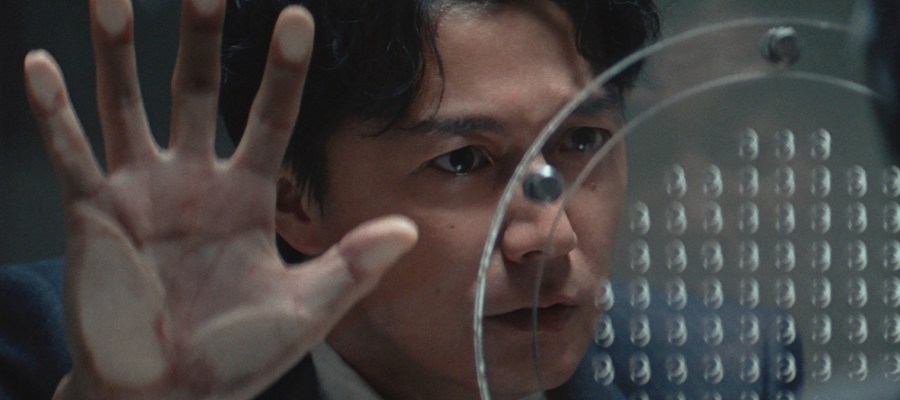
Compassionate, The Third Murder, 2017
I started my mini-marathon with Hirokazu Kore-eda’s latest film, The Third Murder. As per usual Kore-eda goes directly to the psychological heart of his characters, examining their motivations without judgment or prejudice. In The Third Murder a seemingly straightforward homicide investigation takes several unpredictable turns and eventually leads down many unexpected paths. Almost every character presents an unreliable point of view, contributing to the many shades of gray of complicity and blame. Yet Kore-eda emphasizes the compassionate over the judgmental and the film’s open-ended conclusion questions assumptions of guilt and innocence.
The Third Murder is beautifully lit and shot, with Kore-eda using gliding zooms and slow pans to delineate the cinematic space. The film also makes great use of reflection and mirroring to suggest complicity and transference of guilt, since almost everyone in the film lies at one point or another. Performances are also on point, led by the ever-awesome Yakusho Koji (Shall We Dance? The Eel) as the man accused of murder, and the dapper Fukuyama Masaharu (Like Father, Like Son) as the lawyer assigned to the case who begins to doubt everything and everybody as the film progresses.

Vulnerable, A Man of Integrity, 2017
I continued my festival viewing with A Man Of Integrity, by Iranian director Mohammad Rasoulof. Like his compatriot Jafar Panahi, Rasoulof has been arrested in his home country and banned from making films, so A Man Of Integrity was shot on the down-low in a wintry northern area of Iran. The film is a bitter and intense drama about a family settled in a remote Iranian village that comes face to face with the town’s intractable corruption and cronyism. The delicate and vulnerable goldfish that they farm become a metaphor for the family’s tenuous status in the town, and the film is grounded in strong and intense performances by Reza Akhlaghirad and Soudabeh Beizaee as the couple who stand up to corruption in the village.

Power dynamics, Angels Wear White, 2017
Vivian Qu’s Angels Wear White also looks at corruption and power dynamics, this time in a seaside village in China. It’s a gripping narrative about the aftermath of an assault on two schoolgirls and the reverberations of that crime on its small-town location. Director Qu captures the precarious position of the female characters in the film, most of whom are suffering under a sexist and paternalistic system, and she brings out great performances from both the adults and the preteen and teenage actors. Also of note is the film’s excellent editing which moves the story along at a steady and assured pace.

Obscured, The White Girl, 2017
The White Girl features some beautiful cinematography by the legendary cameraman Christopher Doyle (Chungking Express), who co-directed the film with Jenny Suen. Set in one of the last fishing villages in Hong Kong, the film follows a young woman known for her very pale complexion that she protects religiously, supposedly due to her allergy to sunlight. Along the way she encounters a mysterious dude (Joe Odagiri) who lives in a ruined building that is also a camera obscura. Added to mix is an evil developer who wants to pave over the cute fishing village and a subplot involving the white girl’s mother, a famous singing star who long ago abandoned her partner and daughter. The film is heavy with allegory about Hong Kong’s current struggles with China and is a little too elliptical for my taste, but it’s always a pleasure to hear Cantonese dialog.

Struggles, Minding The Gap, 2018
I rounded off my viewings with Bing Liu’s Minding The Gap, which blends character-driven verite with personal documentary. The film follows Liu and two of his skateboarding friends who talk about surviving life in Rockford, a picturesque city about 1.5 hours outside of Chicago that in fact suffers from a high crime rate, most of which is due to domestic violence. The film becomes cathartic for its three distinct and sympathetic characters, including Liu himself, revealing the struggles each encounters in reconciling their painful histories with their current lives. It’s the kind of humanistic doc that Kartemquin Films (which executive-produced the film) is known for, their most famous film being Hoop Dreams. Minding The Gap is good, solid documentary filmmaking that isn’t afraid to touch on difficult topics like alcoholism, wife beating, and child abuse.
Also upcoming this week—the US premiere of John Woo’s latest actioner Manhunt, which may or may not be a return to his past heroic bloodshed glory, Sandi Tan’s personal documentary Shirkers, Hong Sang Soo’s latest Claire’s Camera, and Lee Anne Schmitt’s essay film Purge This Land, among many other cinematic treats.
for tickets and more information go here
End of a day: Jonghyun’s suicide and Orientalist concern trolling

My people my people let’s please not fall for this.
Kpop superstar Kim Jonghyun killed himself earlier this week after a lifelong battle with depression. But the way it’s being spun in some western media outlets has become ridiculous, as if his suicide is a result of the unique pressures of being a Kpop star. It’s not about Kpop or South Korean culture only–this is a bunch of Orientalist bullshit and I’m sorry that people are believing it, though sad to say I’m not surprised that some western press outlets are carrying on as if it’s the gospel truth. But this post on Asian American blog You Offend Me You Offend My Family (YOMYOMF) continues some of the same troubling assumptions, which I had hoped people were not buying.
YOMYOMF’s post states, “His death is being investigated as suicide, and it is pointing in the direction of the mounting pressures he faced as a K-Pop superstar who was in the spotlight. . . It is a major issue which we all need to reflect and act on, and I hope to see Asia really take a serious look at this issue. “ I appreciate that someone is pointing out the need for mental health awareness in Asian/American communities but let’s not pretend that this in only an AZN issue.
YOMYOMF’s post, however, only echoes a lot of the coverage Jonghyun’s suicide has been getting in the Western press. To be fair, media outlets such as the New York Times, the BBC, and People Magazine have been evenhanded in their discussion and avoided racist assumptions. But the appallingly paternalistic coverage in other Western press outlets has barely hidden a slew of racist and culturalist concerns and misconceptions about the Kpop industry and South Korean culture in the most offensive way possible. What really bothers me, though, is the myopia the west has about its own complicity in these kind of tragedies.

The UK media outlet The Guardian has been particularly egregious in beating the Orientalist drum about Jonghyun’s suicide. The Guardian posted this little bit of culturalist concern trolling earlier this week, citing KPop’s “Hunger Games-like musical culture” as a reason for Jonghyun’s death.
“The lockstep perfection of SHINee’s dance routines is undeniably thrilling – but there is something troubling about them too, knowing that only the absolute best will be tolerated.”
Another article from The Guardian also shamelessly pathologized South Korean culture:
“The relentless pressure to achieve can be found in every sector of South Korean society, from its highly competitive education system to a corporate culture that has little tolerance for failure – factors that experts say contribute to the highest suicide rate in the industrialised world.”
Because we don’t know any tech bros in Silicon Valley who are sleeping under their desks and pulling 80-hour work weeks, oh no.
CNN.com also claims, “K-pop’s success has also been dependent on a highly-polished image. Stars typically can’t be seen dating, getting plastic surgery, or become embroiled in any kind of scandal.”
This is stated as if Honey BooBoo never existed or that Lindsey Lohan’s lifelong misery isn’t a thing.
To put this into a broader context, one of the reasons why South Korea uses Kpop and hallyu for cultural and economic leverage is because of the direct results of Western imperialism. Korea was seriously fucked up by the Korean War and one of the ways South Korea managed to dig itself out of its misery is by using soft power in the form of cultural exports to stabilize its economy. So if bombing the fuck out of a country and then dissing it for doing whatever it can to improve life for its citizens isn’t victim blaming I don’t know what is.
To add insult to injury, NBC Chicago news confused SHINee with fellow KPop group BTS and showed a clip of BTS when discussing Jonghyun’s death. I’m not even gonna go there because this is so appalling.

I’m not defending Kpop because it certainly needs all the scrutiny it gets for its treatment of its young stars but the Western press needs to back the fuck up from its sanctimonious attitude about Jonghyun’s death. The prevailing trope has been “Kpop eats its young,” as if this is unique to South Korea’s entertainment industry (The Guardian’s article also criticized Japan for this, which is telling). Hello, do I need to make a list of Western pop stars who have drank and drugged themselves to death? Can anyone say Amy Winehouse? Or those who have outright killed themselves? Cobain, Bennington, and Cornell are names you need to remember. Or of the walking dead of child stars who most likely were sexually abused and now live with that every day of their lives, like Corey Haim, who his friend Corey Feldman says never recovered from being raped as a child by Hollywood executives? The western press needs to step off.
The underlying message here is, “You are barbaric and backward. We are better than you and we are entitled to tell you about it.” And if that’s not Orientalism in a nutshell then I don’t know what is. So please, my people, don’t fall for this.
I Know You’re Coming Along: CNBLUE STAY GOLD album review

NOTE: One more CNBLUE post before I’m done. Bear with me as it’s the end of the year and they probably have run out of product for the time being.
CNBLUE’s new Japanese album, STAY GOLD, just dropped a few weeks ago and once again the Korean rock quartet blends its signature sound with some new beats and flavors. This time they’re mostly on the Jpop tip, and as a whole the album is a cohesive, solid piece of work, with each track flows seamlessly into the next, This is interesting considering almost every track is arranged by a different producer.
Freedom summer, Starting Over, 2017
The lead track, STARTING OVER, is a swinging soul throwback that hearkens back to Ray Charles and his mellow, piano-based R&B sound. The song combines acoustic rhythms mixed with electronic beats, with finger snapping, handclaps, and a rolling piano line that gets the toes tapping and the body swaying, and Yonghwa’s powerful, gorgeous vocals effortlessly convey the liberatory mood of the music. Apropos of its civil-rights era sound, the anthemic chorus and the lyrics, which implore the listener to “sing out loud with all our might/have fun just chillin’/unrestrained/set me free” (Japanese lyrics in italics) feels like something from a freedom summer bus ride. But the song also feels quite contemporary as the track includes a deep thrumming bass line and the second prechorus leads into some sinuous, buzzing guitar. Interestingly enough, the lyrics are almost evenly split between Japanese and English, making for an unusual linguistic mélange.
The second track, THIS IS, at first is a seemingly throwaway pop song that is actually quite sophisticated. This upbeat jam features Yonghwa singing the staccato triple-note Japanese lyrics in his best Jpop style, with a zippy synth line over a strong 4/4 structure that creates a beautiful piece of power pop. There’s a really nice moment about a minute before the end of the song where all instrumentation drops out except a simple, unfiltered piano line that bridges to the song’s conclusion.
The punchy third track, CAPTIVATE, written by Jonghyun, combines a strong rock beat with EDM elements. Yonghwa & Jonghyun flawlessly sing its all-English lyrics, and Yonghwa’s strong raspy voice contrasts nicely with Jonghyun’s smooth crooning.
ONLY BEAUTY, also written by Jonghyun, is a beautiful power ballad that really allows Yonghwa’s vocals to shine, making full use of his singing chops as he ranges from sweet, lilting vocals to raw yet controlled belting. Arranged by Japanese pop metal producer Tienowa, this is my favorite track as it creates a gorgeous soundscape that blends the sound of the Japanese lyrics with a lovely melody and beautiful production. This trip hop track reminds me a bit of their 2015 Japan cut SUPERNOVA as its dense wall of sound, with its fluid bass line, strong drums, crashing cymbals and echoing chorus creates a gloriously bombastic bed for Yonghwa’s powerful vocals. Yonghwa’s final acapella belt towards the end of the track showcases his raspy rock voice at its best.
Yonghwa’s composition, BUTTERFLY, meshes it Japanese lyrics perfectly with its pretty, jazzy melody and shows off more great work with Japanese collaborators Hasegawa and Tienowa. This beautiful bit of pop heaven includes some lovely piano and acoustic guitar picking, a smooth bass line, and a hint of synthesizer over Yonghwa and Jonghyun’s outstanding vocals, with a bit of electric guitar to dirty up the mix. The solitary piano break at the end of the song does a great job of reiterating the lovely bones of the song.
MIRROR is the album’s Jpop tribute, as it sounds like it could easily be an anime theme song with its combination of strings, horns, synthezer and poppy vocals. The track features some incredibly upbeat and cheerful lyrics written by Yonghwa, aka the world’s most optimistic person.
Because the heart can act like a mirror
In a reflection of one another
The pieces coming together make the world brighter
Let’s make a chain of hope
A billion hearts all in a row
Not meant to be only for me
The more we share we will be one
Who writes these kind of Hello kitty lyrics except a dreamer and an optimist? It’s actually kind of refreshing that Yonghwa isn’t embarrassed to sing such flagrantly sweet and sappy lyrics, and they fit the track’s poppy production to a T.
The album’s next track, SHAKE, is the title track from their last Japanese single last spring and it only gets better with repeated listens. It’s ridiculously catchy and danceable and it’s one of my favorite songs from their recent live performances too. The wacky music video is also worth a look as it shows a retro 1960s’ salaryman world gone mad.
The next track, SEEDS, is Jonghyun’s contribution to the album’s world of happiness. Entering into the Irish Rock sweepstakes, it’s another ridiculously upbeat song, with the all-english lyric proclaiming “from the times you cry the flowers grow.” The song is all about overcoming adversity, which reflects how the band has come back from their troubles last year. STAY GOLD is a far cry from last year’s Japanee release EUPHORIA, which was recorded immediately following the worst controversy of CNBLUE’s otherwise mostly successful career, and it had several fairly melancholy tracks on it. But 2017 ha been very kind to CNBLUE and STAY GOLD reflects the upswing in the band’s fortunes, with sold-out shows across Asia, starring roles in popular dramas, and strong sales for their solo and group releases alike.
The most downbeat song on the album is SOMEONE ELSE, another carryover from last spring’s SHAKE single. It’s bit of a mood anomaly but it had to be included here because it’s absolutely flawless. It features Yonghwa’s perfect English delivery, and his raspy voice here beautifully complements the country rock sound of the track. The song’s lyrical structure is also stellar, with paradoxes (when I’m with you/you’re not with me) that convey the melancholic longing of the tune, and the short meter of the first and third lines of the chorus cleverly breaks up the rhythm of the rhyme. A hint of strings, strummed guitar, and a popping bass line round out this clean, simple track that’s a genius blend of songwriting, production, and performance.
The album concludes with BOOK, another relentlessly upbeat, visionary song. Here Yongha’s storytelling skill really come to the fore as he uses the metaphor of a book to express the band’s long journey with its fanbase since its debut nearly eight years ago.
I open a book and my story to see you again
I know that you’re there for me
Remember the time when you gave me the strenth to begin
I know you’re a part of me
Take a step at a time
Cause I gotta believe
I’m gonna make the climb
When I gotta to be strong
and I have to be brave
I know you’re coming along
This may be the last full-length Japanese releae before Yongha’s enlistment sometime in 2018 and it’s as if he’s reassuring fans that both they and the band will endure the long hiatus and come out of it together on the other side. In some way it’s a love song to their fans, and it’s sappy and heartfelt in the best Yonghwa style. It’s delivered with such force and sincerity that its earnest, wide-eyed platitudes ring completely true.
Although it’s very strong the album it isn’t perfect. Some of the production is overly wrought, obscuring the melodies instead of highlighting them. Jonghyun’s voice feels a bit strained on some of the tracks, unlike on the moody ballad WAS SO PERFECT (also from the SHAKE single last spring), where he made the most of his smooth, smoky vocals. The production on some of the songs occasionally makes Yonghwa’s Jpop-style vocals sound thin and nasally and doesn’t make full use of his rich and powerful range. Yet despite these small details, and even though most of the tracks are the work of different producers, the album hangs together really well.
It takes a certain flexibility to follow CNBLUE and their musical wanderings these days because creatively they are changing and evolving with whiplash speed. For those who like a steady and predictable style from their pop music, with CNBLUE you’re probably shopping at the wrong store. For those who enjoy something new and unexpected with every release, CNBLUE is the band for you. I’m personally really loving hearing something completely different with almost every release, especially since they maintain their high level of songwriting, production, and performance throughout. As per usual, STAY GOLD is more quality product from CNBLUE.
Rebel Without A Pause: Why we need GOOK

The Korean American view, GOOK, 2017
Just caught a matinee of Justin Chon’s film GOOK at the Alamo Drafthouse here in San Francisco. Although the movie is a bit rough around the edges for the most part it’s an absorbing and successfully mounted film that focuses on the Korean American perspective of a particularly fraught moment in US history.
The film follows Eli and Daniel, a pair of Korean American brothers who run a small and funky shoe store in Paramount, an unincorporated area bordering South Central Los Angeles. It’s set during the civil unrest in Los Angeles in 1992 following the acquittal of the four LAPD officers caught on camera beating unarmed motorist Rodney King, but most of that action takes place offscreen. Instead the film miniaturizes the conflicts that occurred during that time, focusing on a small group of individuals repping for the entire city of Los Angeles. Several times characters refer to action taking place in South Central but aside from a few digitally added columns of smoke on the distant horizon we don’t actually see any widespread violence. This is no doubt in part due to the film’s indie budget which probably precluded any large-scale set pieces of buildings on fire or shit getting fucked up. So we get a couple broken windows, some beatdowns, a few guns being fired into the air, and other incidents that gesture toward the greater unrest without actually staging any of the mass devastation and destruction that took place during that time.

Time and place, GOOK, 2017
Justin Chon does a good job with his actors (himself included) and demonstrates that he has an eye for time and place in the worn-out, working class neighborhood he places his story in. He’s also got the 1990s kicks fetish down pat as one of the narrative threads turns on the acquisition of several pairs of expensive sneakers. The film’s art direction also works hard, with baggy jeans, overalls, and asymmetrical jheri-curl hairstyles capturing the period’s fashion sensibilities. Although I have some issues with the resolution of the character arc of Kamilla, the young African American teen who befriends Eli and Daniel, for the most part Chon directs with a steady hand and maintains a tone of tense wariness in the film’s multiethnic milieu.
And like MOONLIGHT, which the film in some way resembles, there are no white people in the movie, which attests to the racial and social stratification that led to the explosion of tensions in 1992 following the verdict that acquitted Officers Powell, Wind, Koons, and Briseno of beating Rodney King. Instead the film tells its story from a Korean American POV, one which has for the most part been lacking in mainstream depictions of the 1992 unrest. This omission is especially glaring considering the fact that the Korean American community suffered huge property losses during the unrest and that sa-i-gu, or April 29, is considered a watershed moment in the Korean American community.
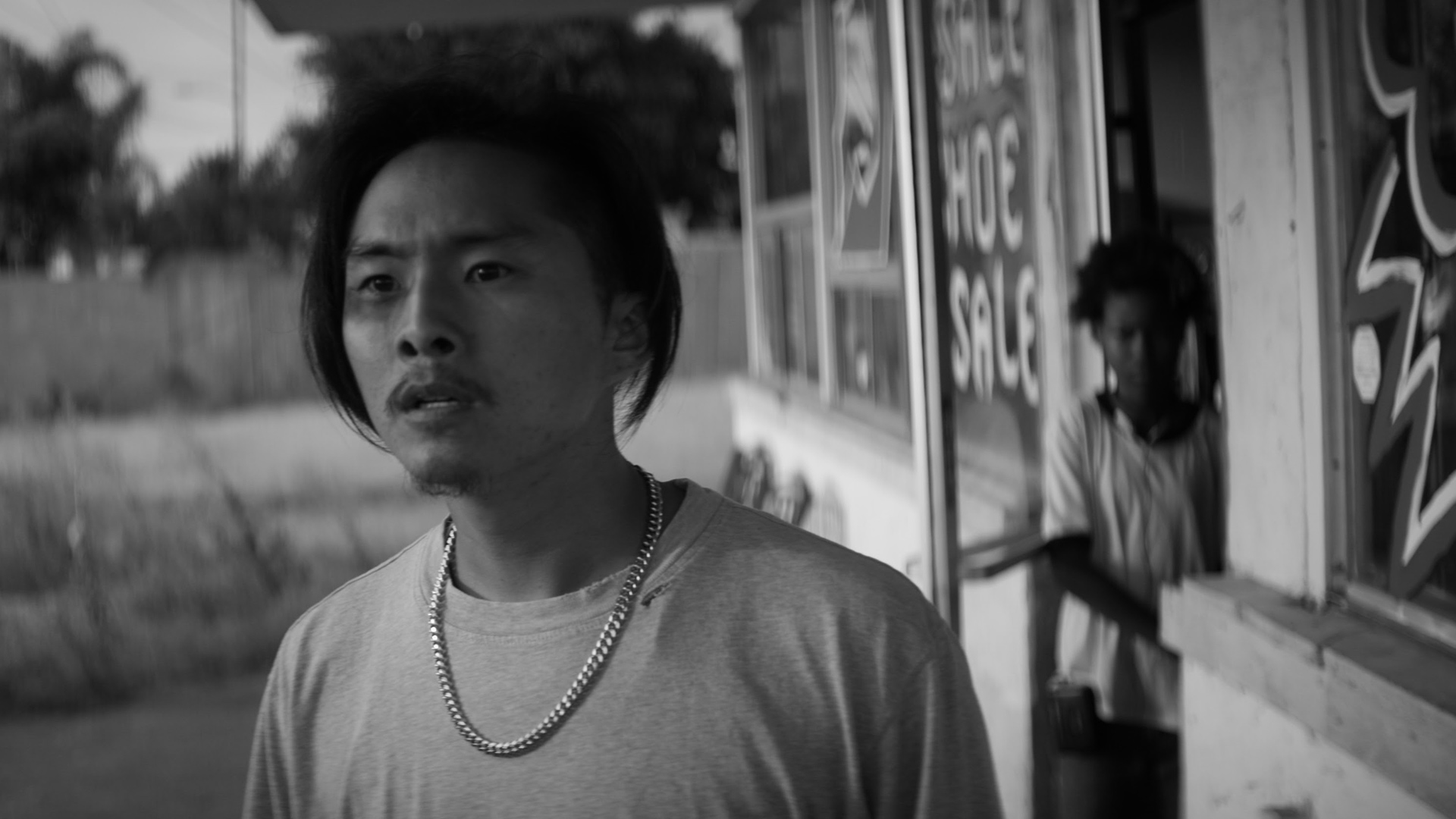
Important, GOOK, 2017
Even in the 21st century the focus on a Korean American perspective is especially important, and this was all the more apparent to me after watching the ads and trailers that preceded GOOK’s screening at the Alamo. The cinema is a hipster haven located in what used to be a predominantly Latino neighborhood, and I counted exactly one non-white person in the many trailers for the various indie films in the upcoming schedule. Likewise, the ironic midcentury aesthetic of the found footage in-house announcements were decidedly not very diverse. One short clip featured an all-white group of young people from the early 1960s dancing to African American style choreography. This moment was presented without a hint of irony and its glaring cultural appropriation felt decidedly tone-deaf.
So even though I feel like I say this a lot, it clearly bears repeating. Unconscious Eurocentric bias makes it all the more important to support films like GOOK. Now more than ever, as Trumpism threatens to turn back the hard-fought gains of the civil rights movement and its struggles for equality and social justice, we have to keep decentering the master narratives of white hegemony and bring Asian American voices to the fore.
Cinémania: 2017 Hong Kong International Film Festival part one

Human horror, Mon Mon Mon Monsters, 2017
I’ve been in Hong Kong for more than a month now on the second leg of my Fulbright Fellowship for Love Boat: Taiwan and I’ve been taking advantage of as much of the city as I can. I scheduled my visit to coincide with the start of the Hong Kong International Film Festival and I managed to catch a whole slew of screenings during the run of the festival. HKIFF has a full slate of international offerings but as an Asian film fanperson I focused mostly on films from that region, with a couple of notable exceptions.

Koo jai, Hong Kong International Film Festival opening night, 2017
I started my HKIFF journey as a press member on the red carpet for the opening night film, Love Off The Cuff. The event was surprisingly not that glamorous, in part because the latest crop of Hong Kong movie actors don’t have the shine of the legendary performers of yore. Although Miriam Yeung, Shawn Yu, and Louis Koo added some star power, somehow Elena Kong and Stephanie Au are just not in the same league as Maggie Cheung, Chow Yun-Fat or Andy Lau.

Susan Shaw Siu Yam-Yam kills it, Hong Kong International Film Festival opening night, 2017
The awesome Susan Shaw Siu Yam-Yam killed it on the red carpet, however, showing the young ones how it’s done.

Anthony Wong Chau-sang up close and personal, Hong Kong International Film Festival. 2017
I also got to breathe the same air as Anthony Wong Chau-sang a bit later in the festival, so that was pretty exciting. Anthony’s definitely got some presence, and I was amused to note his beautiful manicure with clear glossy nail polish. Alas, Francis Ng was not among the stars making an appearance at the festival this year so my fangirl day of reckoning still has to wait.
Here are capsule reviews of some of the films I saw:

Jimmy & Cherie continued, Love Off The Cuff, 2017
Love Off The Cuff, 2017, dir. Pang Ho-Cheung,This is the third installment of the popular franchise that started with Love In A Puff and continued with Love In The Buff. The film is the further adventures of Cherie and Jimmy, the on-again-off-again couple played by Miriam Yeung & Shawn Yue. Here the pair have settled down and cohabitated, but as usual they deal with issues in their romantic relationship. The film is somewhat loosely structured and banks a lot on chemistry between the two lead actors, which fortunately is very strong. Miriam and Shawn feel like they know each other intimately and they’re very comfortable together onscreen. The movie includes a lot of Pang Ho-Cheung filmmaking tics, including fantasy sequences, big rubber monsters, vulgarity and profanity, poop jokes, condom jokes, blowjob jokes, pubic hair jokes and jokes about Miriam Yeung’s glorious colored hair. Unlike Love In The Buff, which was partially set in Beijing, this film very rooted in Hong Kong, as expressed in the abundance of local slang and the familiarity with Hong Kong’s everyday culture.
The film’s need to create dramatic tension relies on a questionable misunderstanding that hinges on Cherie’s ongoing relationship anxiety, but after many years together, what seemed realistically cautious seven years ago now just feels neurotic and needy on Cherie’s part. Jimmy character has grown but Cherie’s character is stuck and unable to move on. The movie also suggests that her anxiety is all based on her ticking maternity clock, which feels a bit retro in the 21st century. All in all the film is not quite as fun and kicky as the first installment and not as complex and angsty as the second, but it’s still pretty amusing.

Bad romance, 77 Heartbreaks, 2017
77 Heartbreaks, 2017, dir. Herman Yau
77 Heartbreaks features a similar couple dynamic to Love Off The Cuff, featuring a responsible woman fed up with her childlike boyfriend. I had a bit of a hard time believing that the lead pair in the movie really dated for ten years, since Charlene Choi seems really young and Pakho Chau looks like he’s a 24-year-old skateboarder, not a lawyer in his thirties. Herman Yau’s direction is professional and assured, of course, but the film doesn’t stray far from romantic dramedy conventions. In a brief performance Anthony Wong Chau-Sang boosts up the few scenes he’s in, making the movie come alive, but otherwise the film is somewhat glossy and superficial. Sadly, since I had jet lag I nodded off during the most important part of the movie, which was an extended cameo by Francis Ng. Sometimes I just can’t catch a break.

Just kiss already, Soul Mates, 2016
Soul Mates, 2016, dir. Derek Tsang
This is a Hong Kong-China co-production that feels Taiwanese, except without the unrestrained sexuality of the best Taiwanese romantic dramas. The film includes a very circumspect love triangle, including hints of curiously muffled same-sex attraction. No lesbians wanted in this co-production, despite several scenes where the two leads discuss bra sizes and scrutinize each other’s boobs in the bathroom. I wanted to tell the girls to just kiss already, but there is no actual consummation of their very close relationship. Both of the young actresses are quite good, and the two won a rare (unprecedented?) shared Golden Horse award for Best Actress for their performances.

Looking for peace, Mad World, 2016
Mad World, 2016, dir. Wong Chun
A drama that follows the relationship between a bipolar man and his long-estranged father, the film features excellent performances by Shawn Yue and Eric Tsang as the son and father. The film sustains its intensity throughout and is bleak and unrelenting without being oppressively so. Although there are several opportunities to do so the film never veers into melodrama, instead opting for a relatively unsensationalized look at mental illness and its stigma in Hong Kong. Charmaine Sheh also quite good as Shawn Yue’s girlfriend who self-medicates with Jesus.

Passionate and relevant, I Am Not Your Negro, 2016
I Am Not Your Negro, 2016, dir. Raoul Peck
Wow, mind blown—-a passionate, relevant, important piece of work.. This is amazing documentary stitches together Hollywood movies, archival footage, news footage, and the brilliant words of James Baldwin. Although Samuel L. Jackson’s reading of Baldwin’s words is excellent, the real Baldwin matches him with his fiery, intelligent, and articulate appearances, most significantly in a clip from the 1960s from The Dick Cavett Show. Given the horrific state of affairs in race relations in the U.S. right now, this film was almost too much for me to watch since it’s so, so relevant. Technically the film is a gem, with some really nice use of archival footage and Hollywood movies.

Untold and unseen, The Salesman, 2016
The Salesman, 2016, dir. Asghar Farhadi
This is another brilliant drama from Asghar Farhadi, who won his second Oscar for Best Foreign Language film for this one. As in A Separation (2011), in this film Farhadi does an impeccable job demonstrating moral ambiguity and the impossibility of clearly delineating between good and bad. I love his use of architecture and the metaphor of a crumbling building to signify the shaky ethical grounds we all stand on in day-to-day life. Farhadi is the master of the untold and the unseen, allowing the audience to fill in the blanks and speculate about the events of the narrative. This is smart, smart filmmaking, grounded in strong and passionate performances from the lead and supporting cast. What seems like a family melodrama becomes a metaphor for the moral and ethical challenges we all face in daily life.

Wacky, What A Wonderful Family, 2016
What A Wonderful Family, 2016, dir. Yoji Yamada
Veteran Japanese director Yoji Yamada’s slapstick comedy looks at the exploits of a wacky Tokyo family as they face an emotional crisis in their midst. The house was full with about 1500 people when I saw this and the audience loved this shtick, which was replete with poop jokes and a very slightly morbid sense of humor. This is probably not surprising coming from a territory that spawned Chicken and Duck Talk and Stephen Chow, as this film was a Japanese version of classic Cantonese comedies, with its focus on interpersonal foibles and bodily functions. More TV sitcom than deep cinematic experience, it was nonetheless a crowd-pleaser.

Realization, Cinema, Manoel de Oliveira and Me, 2016
Cinema, Manoel de Oliveira and Me, 2016, dir. João Botelho
This is a really nice essay film about the great Portugese director Manoel de Oliveira which was directed by one of Oliveira’s protégés. The film mixes up archival footage, and other cinematic flotsam in a fascinating and often unexpected way, seamlessly integrating into Oliveira’s own film work It concludes with a realization of Oliviera’s last unfinished script, a poignant rumination on the bitter life of a young prostitute.

Burning silhouette, 1981
Ana Medieta short film programme, 1971-81, dir. Ana Mendieta
This program featured several short films by the late lamented Cuban artist Ana Mendieta. It’s nice to see some old-school experimental film/performance art in a major film festival so hat’s off to HKIFF for including this. The shorts showed a good range of Mendieta’s work, which only accentuates the tragedy of her early death (by falling out of a window after an argument with her husband, sculptor Carl Andre). Mendieta’s work is very kinetic, so seeing film documentation of her performances is very satisfying, especially those works involving fire. There’s something utterly fascinating about watching things burn.

Cruelty, Mon Mon Mon Monsters, 2017,
Mon Mon Mon Monsters 2017, Giddens Ko
My film festival viewings ended with the world premiere of Giddens Ko’s newest film and it did not disappoint. A teen drama cum horror movie, this is a harrowing piece of work that touches on bullying, peer pressure, and the depths of human inhumanity in a seemingly ordinary secondary school. Although this is clearly a commercial genre film Giddens manages to work up some truly horrifying moments of teenage cruelty. The conclusion of the film is a mic drop to end all mic drops. This one is destined to make a sensation all over the Asian box office.
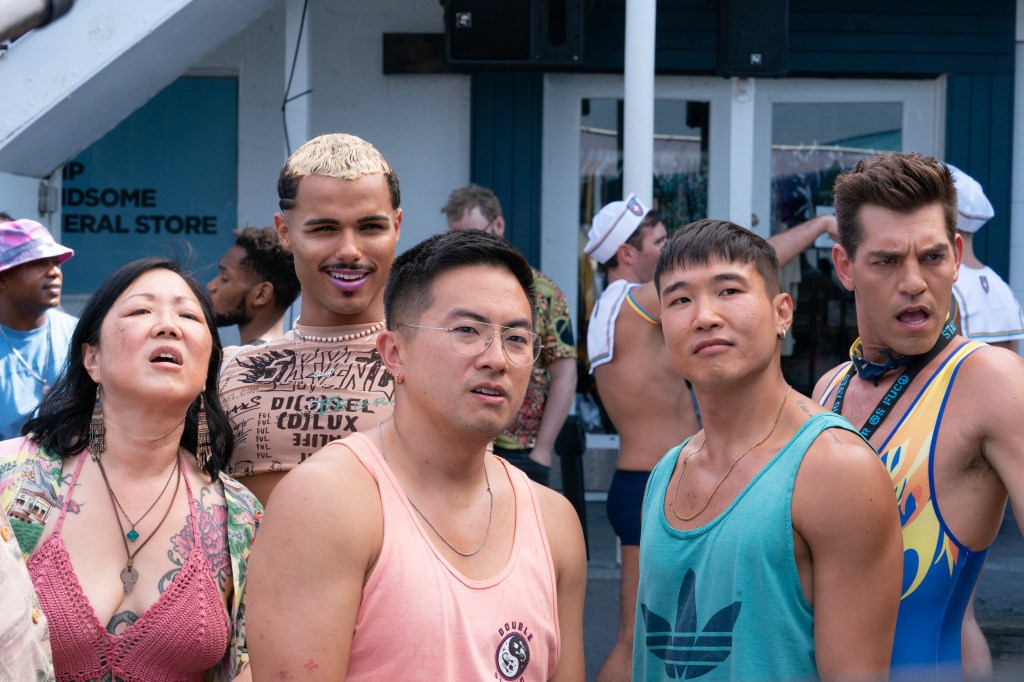






Recent Comments